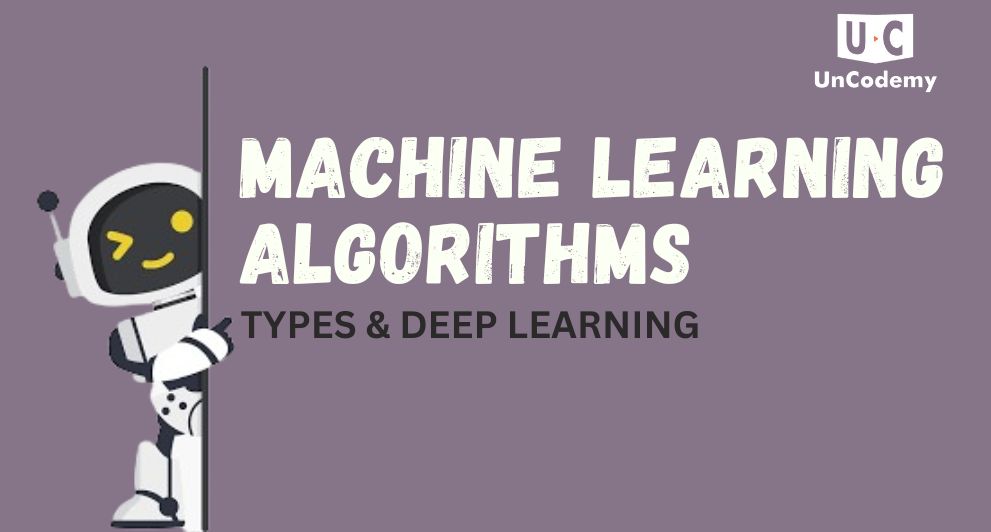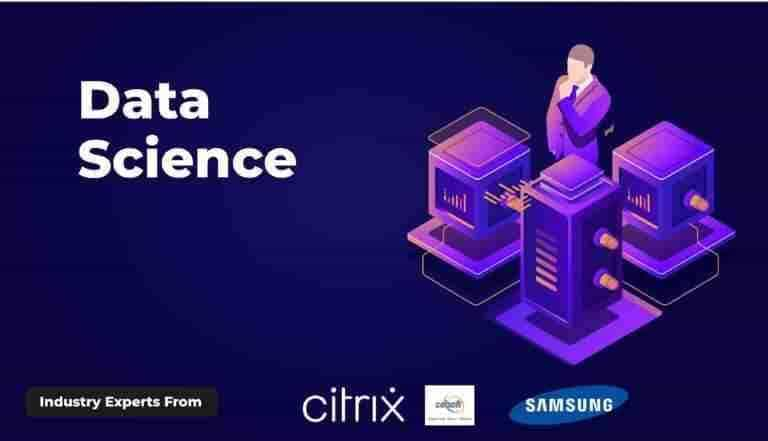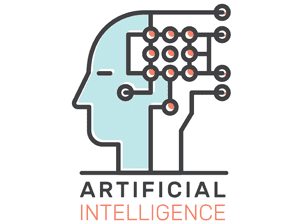Mastering Ensemble Learning: Methods and Stacking in ML

- AI algorithms
- Deep Learning
- machine learning
- machine learning models
- Reinforcement Learning
- Supervised Learning
- types of machine learning
- Unsupervised Learning
At the heart of machine learning are the algorithms that power these systems. These algorithms process vast amounts of data, identifying patterns and making predictions or decisions. In this blog, we will explore the various types of machine learning algorithms, the distinction between traditional machine learning and deep learning algorithms, and provide an understanding of how learning machines operate.
What are Machine Learning Algorithms?
Machine learning algorithms are sets of instructions or models used to allow machines to learn from data and make predictions or decisions based on that data. The underlying idea is that by analyzing large datasets, these algorithms can identify patterns, correlations, and trends without requiring explicit programming to handle every scenario.
Machine learning algorithms can be broadly classified based on how the learning is carried out. In simple terms, the machine learns by making predictions or classifications, evaluating the results, and adjusting based on those evaluations.
Types of Machine Learning

Machine learning can be divided into three primary categories based on the learning style and the nature of the data:
1. Supervised Learning
Supervised learning is the most common type of machine learning. In this approach, the algorithm is provided with labeled data, meaning each piece of training data is associated with the correct answer (label). The goal is for the algorithm to learn the relationship between the input data (features) and the output label, so it can make accurate predictions when given new, unseen data.
Example: In a supervised learning task such as spam email classification, the algorithm is trained on a dataset containing emails that are labeled as “spam” or “not spam.” Once the model is trained, it can predict whether new emails are spam or not based on the patterns it learned during training.
Common Supervised Learning Algorithms:
- Linear Regression: Used for predicting a continuous outcome based on one or more features.
- Logistic Regression: Used for classification tasks where the output is binary.
- Support Vector Machines (SVM): Effective for classification and regression tasks.
- Decision Trees: A tree-like model used for both classification and regression.
- Random Forests: An ensemble of decision trees that improves accuracy and reduces overfitting.
2. Unsupervised Learning
In unsupervised learning, the algorithm is given data without labels. The goal of unsupervised learning is to find hidden patterns or intrinsic structures within the data. This type of learning is often used when the dataset lacks labeled examples or when the goal is to explore the underlying distribution of the data.
Example: In customer segmentation, an unsupervised learning algorithm can group customers based on purchasing behavior without any predefined categories.
Common Unsupervised Learning Algorithms:
- K-Means Clustering: A method of partitioning data into K distinct clusters based on similarity.
- Hierarchical Clustering: Builds a tree of clusters and is useful for hierarchical data.
- Principal Component Analysis (PCA): A dimensionality reduction technique used to reduce the number of features while retaining most of the variance in the dataset.
3. Reinforcement Learning
Reinforcement learning (RL) is a type of machine learning where an agent learns to make decisions by performing actions in an environment to maximize cumulative reward. Unlike supervised or unsupervised learning, reinforcement learning is driven by trial and error, with the agent receiving feedback in the form of rewards or penalties based on the actions it takes.
Example: In a video game, an agent (the player) may learn to optimize its strategy through repeated play, receiving positive rewards for winning and negative penalties for losing.
Common Reinforcement Learning Algorithms:
- Q-Learning: A model-free algorithm that learns the value of taking a particular action in a given state.
- Deep Q Networks (DQN): A combination of Q-learning and deep learning, used for solving complex tasks like playing Atari games.
- Policy Gradient Methods: These methods directly optimize the policy (strategy) used by the agent to take actions in the environment.
Deep Learning Algorithms
Deep learning is a subfield of machine learning that uses multi-layered artificial neural networks to process complex data patterns. While traditional machine learning algorithms work well with structured data, deep learning algorithms are particularly effective in handling unstructured data like images, text, and speech.
Deep learning models are composed of many layers, each of which transforms the input data into increasingly abstract representations. The deeper the network, the more sophisticated the patterns it can recognize.
Popular Deep Learning Algorithms:
- Convolutional Neural Networks (CNNs): Primarily used for image processing tasks, such as object detection and image classification.
- Recurrent Neural Networks (RNNs): Suitable for sequential data tasks like speech recognition, language modeling, and time series forecasting.
- Long Short-Term Memory (LSTM): A type of RNN designed to handle long-range dependencies in sequential data, improving on the traditional RNN’s ability to remember important information over time.
- Generative Adversarial Networks (GANs): Used for generating synthetic data, such as images, from random noise by training two neural networks: a generator and a discriminator.
- Transformer Models: State-of-the-art architecture for natural language processing (NLP), which powers models like GPT, BERT, and T5. These models are designed to handle long-range dependencies and large-scale language data efficiently.
Deep learning has been especially transformative in fields like computer vision, natural language processing, and speech recognition.
Learning Machines: How They Evolve
The essence of a learning machine is its ability to improve over time through experience. In machine learning, the machine is exposed to data, makes predictions or decisions, evaluates them, and then adjusts its internal parameters based on feedback. Over time, this iterative process allows the machine to become better at solving the task at hand.
Training a Machine Learning Model:
- Data Collection: The first step is gathering the relevant data, which could range from images, text, numbers, or even time-series data.
- Data Preprocessing: This step involves cleaning the data by removing outliers, handling missing values, and normalizing data to ensure consistency.
- Model Selection: Choosing the right algorithm that suits the problem and data at hand.
- Training the Model: Feeding the preprocessed data into the model to learn the patterns.
- Evaluation: Assessing the performance of the model using metrics like accuracy, precision, recall, and F1 score.
- Optimization: Tuning hyperparameters to improve the model’s performance.
Types of Machine Learning Algorithms
The world of machine learning algorithms is vast, with a wide range of techniques and models designed for different tasks. To recap, the major types include:
1. Classification Algorithms
These algorithms assign data to specific categories or classes based on their features.
- Logistic Regression
- Support Vector Machine (SVM)
- Naive Bayes
2. Regression Algorithms
Used to predict a continuous value.
- Linear Regression
- Ridge Regression
- Lasso
3. Clustering Algorithms
Unsupervised learning algorithms that group data based on similarity.
- K-Means
- DBSCAN
- Agglomerative Clustering
4. Dimensionality Reduction Algorithms
Techniques that reduce the number of input features, improving computational efficiency and reducing overfitting.
- Principal Component Analysis (PCA)
- t-Distributed Stochastic Neighbor Embedding (t-SNE)
5. Neural Networks
A family of algorithms inspired by the structure of the human brain, used for tasks like image recognition, NLP, and more.
- Multilayer Perceptron (MLP)
- Convolutional Neural Networks (CNNs)
- Recurrent Neural Networks (RNNs)
6. Ensemble Methods
These algorithms combine multiple models to make more accurate predictions.
- Random Forests
- Gradient Boosting Machines (GBM)
- AdaBoost
Conclusion
Machine learning is an incredibly powerful tool, enabling machines to learn from data, improve over time, and make intelligent decisions. By understanding the various types of machine learning algorithms, including supervised, unsupervised, and reinforcement learning, as well as deep learning techniques, you can gain a deeper appreciation for the complex processes that power intelligent systems.
Whether it’s a simple regression model or a complex deep learning algorithm, machine learning continues to evolve, opening new frontiers in AI and automation. As we move forward, the need for more sophisticated models, better data, and improved computational power will continue to drive advancements in this exciting field.
FAQs Related to Machine Learning Algorithms
1. What is machine learning?
Machine learning (ML) is a subset of artificial intelligence (AI) that enables computers to learn from data and make decisions without explicit programming. ML algorithms identify patterns in data and use them to predict future outcomes or make classifications.
2. What are the main types of machine learning?
Machine learning is generally classified into three main types:
- Supervised Learning: The algorithm is trained on labeled data.
- Unsupervised Learning: The algorithm finds patterns in unlabeled data.
- Reinforcement Learning: The algorithm learns by interacting with an environment and receiving feedback.
3. What are deep learning algorithms?
Deep learning is a subset of machine learning that uses multi-layered neural networks to model complex patterns in data. It is particularly effective in tasks like image recognition, natural language processing, and speech recognition. Popular deep learning algorithms include CNNs (Convolutional Neural Networks) and RNNs (Recurrent Neural Networks).
4. What is the difference between supervised and unsupervised learning?
- Supervised Learning: The model is trained on labeled data, meaning each input comes with the correct output.
- Unsupervised Learning: The model is trained on unlabeled data, and it must identify patterns or groupings on its own, like clustering similar data points.
5. Can machine learning be used for prediction?
Yes, machine learning is commonly used for prediction tasks. In supervised learning, models are trained on historical data to predict future outcomes, such as forecasting sales, predicting stock prices, or diagnosing medical conditions.
6. What are some popular machine learning algorithms?
- Linear Regression: For predicting continuous values.
- Decision Trees: For classification and regression tasks.
- Support Vector Machines (SVM): Used for classification and regression.
- K-Means Clustering: An unsupervised algorithm for grouping similar data points.
7. What is reinforcement learning?
Reinforcement learning (RL) is a type of machine learning where an agent learns to make decisions by performing actions in an environment and receiving feedback in the form of rewards or penalties. It’s commonly used in robotics, gaming, and autonomous systems.
8. What is the role of data in machine learning?
Data is crucial in machine learning. The quality and quantity of data determine how well a model can learn patterns and make predictions. Clean, well-labeled data is essential for supervised learning, while unsupervised learning relies on the structure and characteristics of the data itself.
9. How do deep learning models work?
Deep learning models, such as neural networks, process data through multiple layers of interconnected nodes (neurons). Each layer extracts features from the data, and the deeper the network, the more abstract the features become. These models excel in tasks like image recognition, speech processing, and natural language understanding.
10. How do I choose the right machine learning algorithm?
Choosing the right algorithm depends on several factors, including:
- Type of data: Structured (e.g., tabular data) vs. unstructured (e.g., images, text).
- Task at hand: Classification, regression, clustering, etc.
- Performance metrics: Accuracy, precision, recall, F1 score, etc.
- Computational resources: Some algorithms require more processing power than others.


























